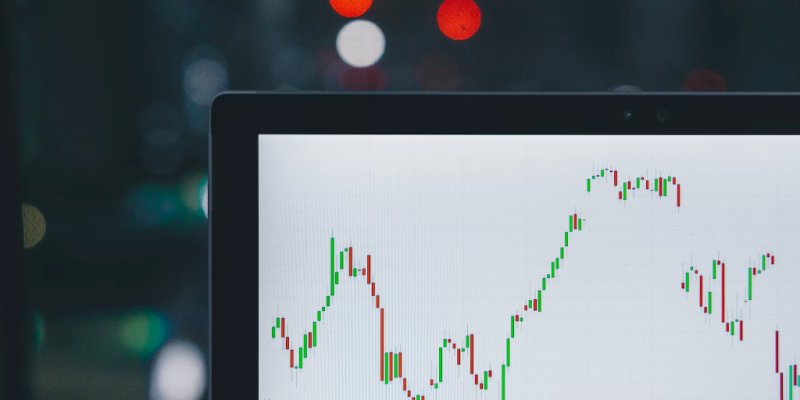Home > Investment Guide > Investing Basics
Understanding the Commitments of Traders (COT) Report: A Comprehensive Guide

The Commitments of Traders (COT) report is a valuable tool for traders to gain insights into the futures market. Published weekly by the Commodity Futures Trading Commission (CFTC), this report provides a snapshot of the positions held by different types of traders, including commercial traders, non-commercial traders, and retail traders. By analyzing the data in the COT report, traders can make more informed decisions about buying or selling assets.
What is the COT Report?
The COT report is a weekly publication that provides information on the holdings of various market participants in the futures market. It is published every Friday based on data collected by the CFTC as of the close of business on Tuesday. The report includes data from reporting firms such as clearing houses and forex brokers, and it offers transparency and insights into the commodities and futures market, such as gold, USD, Euro, GBP, and Bitcoin etc.
There are four main types of COT reports: the Legacy report, the Supplemental report, the Disaggregated report, and the Traders in Financial Futures report. Each report focuses on different assets and provides unique information about the positions held by different types of traders.
Types of COT Reports
-
Legacy Report: The Legacy report breaks down the reportable open interest by non-commercial traders and commercial traders. It provides a comprehensive overview of the positions held by these two groups.
-
Supplemental Report: The Supplemental report focuses on agricultural commodity contracts. It includes data on commercial, non-commercial, and index traders, providing insights into the positions held by these market participants.
-
Disaggregated Report: The Disaggregated report expands on the information provided in the Legacy report. It includes data on various assets such as agricultural products, petroleum, natural gas, electricity, and more. This report offers a more detailed breakdown of positions held by different types of traders.
-
Traders in Financial Futures Report: The Traders in Financial Futures report covers contracts related to currencies, Eurodollars, stocks, VIX, and the Bloomberg Commodity Index (BCOM). It provides insights into the positions held by different types of traders in these financial futures.
How to Interpret the COT Report
According to many traders, the best website for COT reports is Tradingster.com. That site not only offers up-to-date data but also provides interactive charts and historical data as well.
Analyzing the COT report requires an understanding of the different types of traders and their motivations. Commercial traders, also known as hedgers, use the futures market to hedge against price movements and protect their assets. They tend to be the most bullish at market bottoms and the most bearish at market peaks.
On the other hand, non-commercial traders, or speculators, follow trends and aim to profit from price movements. They tend to sell when the market is heading downward and buy when the market is going up. Non-commercial traders play a significant role in market trends and often use moving averages to guide their trading decisions.
To interpret the COT report, it's important to pay attention to extreme positions held by non-commercial traders. When non-commercial short positions reach an extreme low, it may indicate a potential reversal in the market. Conversely, when non-commercial long positions reach an extreme high, it may signal a potential downward trend. However, it's essential to confirm these reversals with other technical indicators before making trading decisions.
The Role of Sentiment in the COT Report
Sentiment plays a crucial role in market movements, and the COT report can provide valuable insights into market sentiment. By analyzing the positions held by different types of traders, investors can gauge market sentiment and make informed decisions.
Commercial traders, as hedgers, are often more bullish when the market is at its lows and more bearish when an asset is trading at its highs. They aim to protect their assets and hedge against unexpected price movements. Their sentiment can provide insights into potential reversals in the market.
Non-commercial traders, on the other hand, follow trends and their sentiment reflects their trading strategy. Their positions can indicate the strength of a trend and potential turning points in the market. However, it's important to note that non-commercial traders' sentiment is not always correct, and market movements can sometimes go against their positions.
Case Study: The Swiss National Bank
A notable example of the impact of the COT report is the Swiss National Bank's decision to remove the currency peg in 2015. This unexpected move caused significant market reactions, particularly for traders who had positions in Swiss-dominated currencies. Understanding extreme positions in the COT report can help traders anticipate such events and make timely entry or exit decisions.
Developing a COT Report Trading Strategy

To develop a trading strategy using the COT report, traders can look for extreme net long or net short positions held by non-commercial traders. These extreme positions may indicate potential market reversals. For example, if a currency or commodity has a high number of long positions, it may suggest that the market is overbought and due for a reversal. Conversely, if there are a high number of short positions, it may suggest an oversold market.
It's important to note that the COT report provides lagging data since it is published weekly. Traders should use it as a tool to gain an overview of the market and confirm their analysis with other technical indicators. Additionally, traders should focus on the data from speculators, such as hedge funds, as it can provide valuable insights into future market trends.
Taking Advantage of the COT Report
While the COT report is a valuable tool for traders, it has some limitations. Its weekly publication means that traders need to record the data themselves to track non-commercial traders' positions. However, the potential profits from capturing the full big moves in the market make it worth the effort.
By analyzing the COT report and combining it with other technical indicators, traders can gain a deeper understanding of market sentiment and potential turning points. While sentiment alone is not sufficient for trading decisions, it can provide valuable insights when combined with thorough analysis and risk management strategies.
Conclusion
The Commitments of Traders (COT) report is a valuable resource for traders looking to gain insights into the futures market. By analyzing the positions held by different types of traders, traders can gauge market sentiment and make more informed trading decisions. While the COT report should be used in conjunction with other technical indicators, it can provide valuable insights into potential market reversals and trends. Utilizing the COT report as part of a comprehensive trading strategy can help traders capture the full potential of big moves in the market.
More to Read:
Previous Posts:




